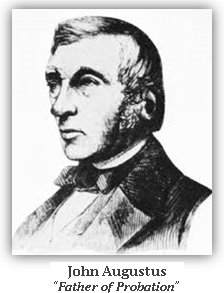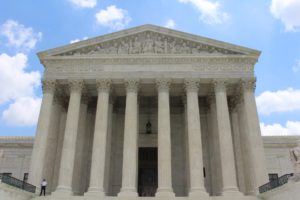Did you know that it wasn’t until 1956 that every U.S. state had probation laws?
Given the huge role probation plays in the modern criminal system, it’s hard to fathom that just 65 years ago that wasn’t the case. Now probation is the most common criminal sentence in the US and 73% of individuals under correctional control in the US are on it.
However, probation has increasingly come under fire for the role it plays in incarceration. But before we can understand the issues modern probation faces or examine how they are being addressed, it’s important to look at how we got here. So, over our next posts, we’ll be exploring three important periods in probation history.
- Early Probation: 1841 – 1970
- The Great Shift: 1970-1980
- The Rise Strict Correctional Control: 1980-2000
Let’s get started!
Early Probation
Before the U.S. had a formalized probation system, there was John Augustus, a cobbler from Boston. Between 1841 – 1858, using mostly his own money, he posted bail for almost 2,000 people he believed would be better served by “rehabilitation” than jail. He helped the individuals find employment, get an education, and reported on their progress to the court, leading him to be called the “Father of Probation.”

In 1871, the first formal probation officer was attached to courts in Boston, followed by state-wide legislation that mandated probation programs be a part of all Massachusetts courts in 1891. It was almost 20 years before probation bills were introduced at the federal level in 1909. However, they were not passed, more groundwork was needed.
In 1916, the Supreme Court heard a case examining the constitutionality of suspended sentences, Ex parte United States, 242 U.S. 27. In the subsequent ruling—the Killits Decision—the judges determined that courts do not have the power to indefinitely suspend sentences and recommended that probation laws be used instead. The ruling paved the way for The Probation Act of 1925 which (finally!) created a probation system at the federal level.

It took 84 years, but by 1925, both state and federal probation programs had their start, and they were all based on the rehabilitative model pioneered by John Augustus.
By 1956, each U.S. state had established adult and juvenile probation programs, and the programs were based on the “correctional philosophy of rehabilitation.” Probation was seen as “an opportunity to divert the [individual] from imprisonment and give [them] another chance.”
Throughout the 1960s, the rehabilitative model was almost exclusively used by probation programs and had widespread public support. This continued until the early 1970s when one research article changed the course of American probation.
Check back later for part 2 of our probation series, The Great Shift.
Up Next in January
A Fireside Chat with Chief Wendy Still
Our CEO Sam Hotchkiss is kicking off Reconnect’s 2021 Webinar series with a one-on-one conversation with Wendy Still, Chief Probation Officer of Alameda County (Oakland, CA) and former Chief Probation Officer of San Francisco county as she prepares to retire later this year.
During her career, she has witnessed drastic policy shifts, the evolvement of effective evidence-based strategies and practices, budget and staffing cuts, and countless other industry milestones, while being a relentless advocate for change and progress within the system.
Spaces for the chat are limited and filling up fast, register now!